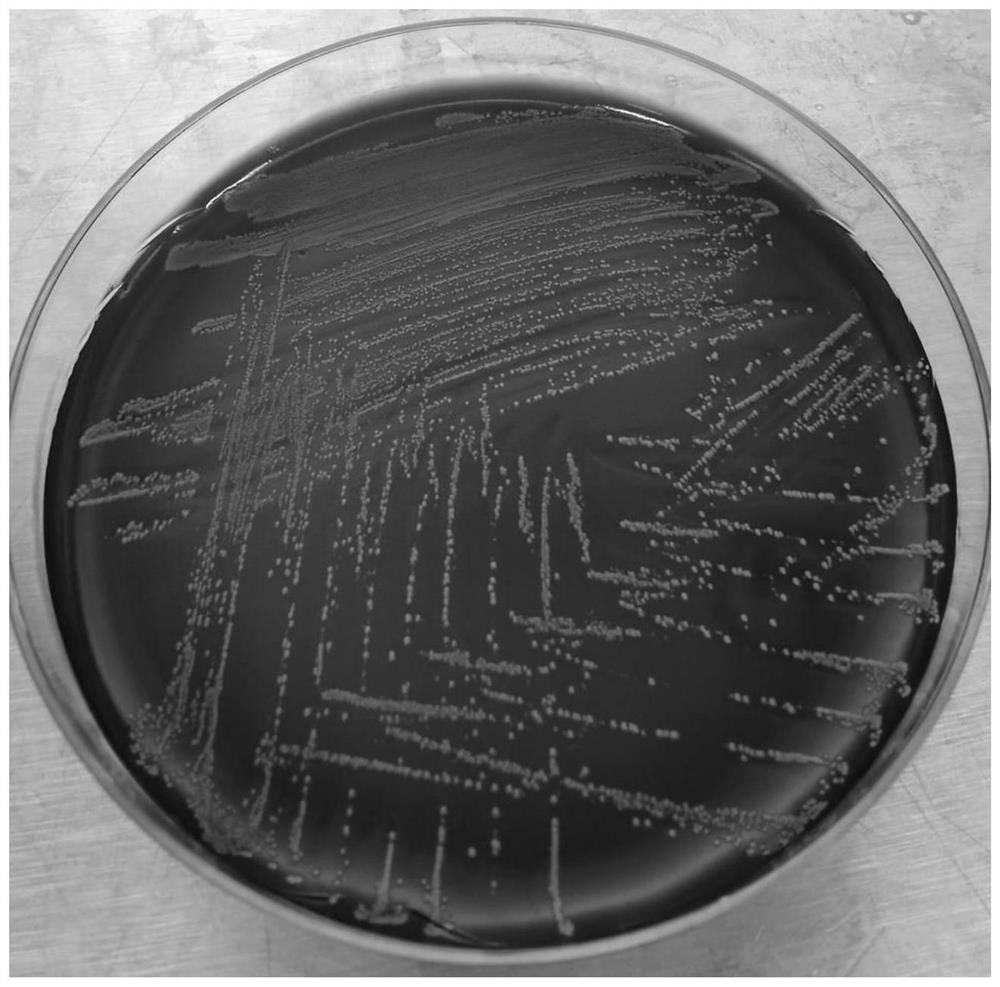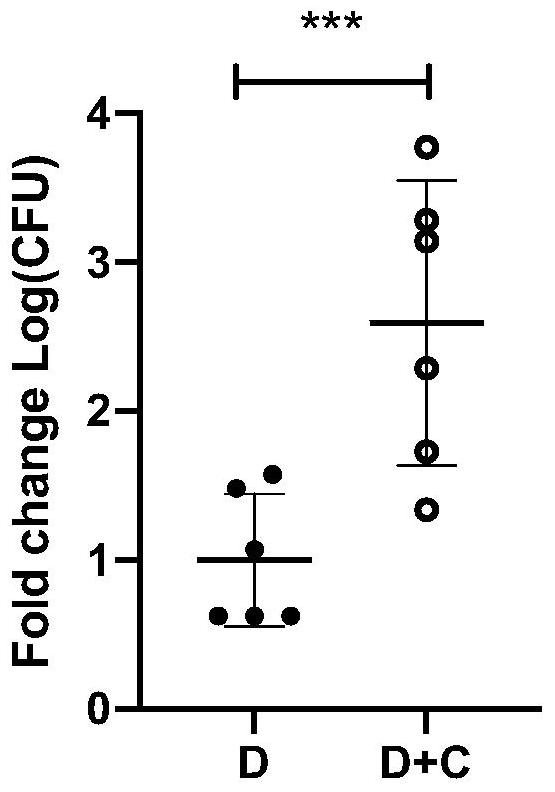Corynebacterium and application thereof in ocular surface fungal infection resistance
A technology for coryneform bacteria and fungal infection, applied in antifungal agents, bacteria, sensory diseases, etc., can solve problems such as immune disorders, tissue damage, antibiotic abuse, etc., to enhance ocular surface immunity and protect against fungal infections.
- Summary
- Abstract
- Description
- Claims
- Application Information
AI Technical Summary
Problems solved by technology
Method used
Image
Examples
Embodiment 1
[0028] Example 1: Bacterial isolation and detection
[0029] In 2021, at the Institute of Ophthalmology Affiliated to Shandong First Medical University, according to the ethical regulations of biological sampling, the target strains were isolated from the conjunctival sac of healthy people who visited the Department of Corneal and Refractive Surgery.
[0030] The specific screening and separation steps are as follows:
[0031] Use a disposable sterile cotton swab to gently wipe the conjunctival sac of a healthy person, immediately seal the cotton swab aseptically, put the cotton swab in the LB broth, soak and stir in the UV-sterilized microbiological operation table, and then put it in a constant temperature of 37°C. Culture in the box, observe once a day, when the broth is turbid, under sterile conditions, dip the broth bacterial solution with a disposable inoculating ring, spread it evenly on the blood agar plate, and put it into a 37°C constant temperature incubator cultiv...
Embodiment 2
[0042] Example 2: The process and effect of C.mac2 strain colonization on the ocular surface
[0043] The live bacteria preparation of the Corynebacterium C.mac2 strain, the inactivated preparation of the Corynebacterium, the relevant single or mixed bacterial components, and the bacterial derivative products were tested for the control effect of the ocular surface pathogenic strains.
[0044] By colonizing the ocular surface, the concentration was 10 8 cfu / mL of Corynebacterium C.mac2 strain viable bacterial preparation was instilled into the ocular surface of wild-type C57BL / C mice for a total of 9 days of colonization. After the colonization was completed, the colonization success rate was evaluated. The colonization effect of wild-type C57BL / C mice was detected by PCR after 2 weeks of colonization with C.mac2. Figure 2A As shown, the results of PCR detection of C.mac2 colonization in diabetic C57BL / C mice for 2 weeks were as follows: Figure 2B shown.
Embodiment 3
[0045] Example 3: Promoting effect of C.mac2 strain on repair of ocular surface damage in mice
[0046] In wild-type C57BL / C mice (WT group), colonized C.mac2 wild-type mice (WT+C group), diabetic C57BL / C mice (D group) and colonized C.mac2 diabetic mice (D+C group) to conduct epithelial healing experiments, mice were cured under the state of chloral hydrate anesthesia with a 2.5 mm diameter epithelial layer in the center of the corneal epithelium, and then the ocular surface of the mice was treated at 0 hours, 12 hours, 24 hours, 36 hours and other time points. Fluorescein sodium staining was used to take a general slit lamp photo. The results are shown in Figure 3. It was found that after colonization, C.mac2 wild-type mice (WT+C group) and diabetic mice (D+C group) were compared to their non-colonized counterparts. group had faster epithelial healing.
PUM
 Login to View More
Login to View More Abstract
Description
Claims
Application Information
 Login to View More
Login to View More - R&D
- Intellectual Property
- Life Sciences
- Materials
- Tech Scout
- Unparalleled Data Quality
- Higher Quality Content
- 60% Fewer Hallucinations
Browse by: Latest US Patents, China's latest patents, Technical Efficacy Thesaurus, Application Domain, Technology Topic, Popular Technical Reports.
© 2025 PatSnap. All rights reserved.Legal|Privacy policy|Modern Slavery Act Transparency Statement|Sitemap|About US| Contact US: help@patsnap.com



